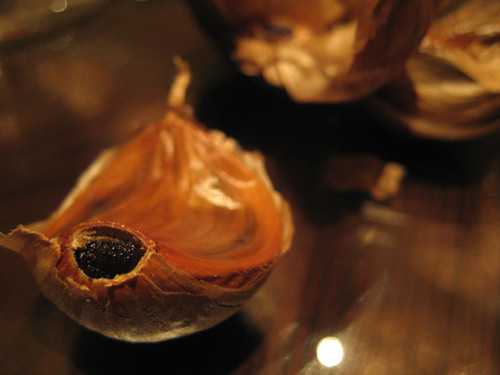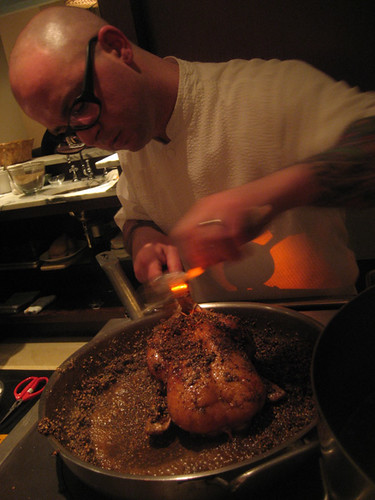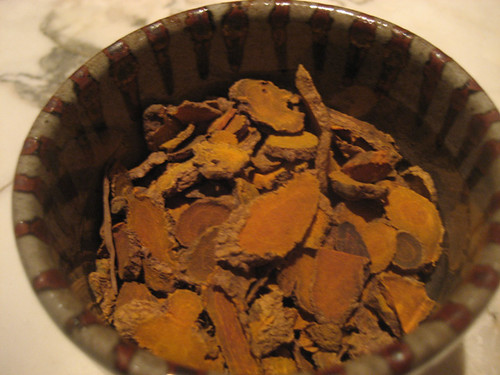
L, duck, R, chef.
It may seem strange or even hypocritical to say so, but I’m not a fan of chefs roaming the room chatting up each table. I mean, I think it’s a smart practice, management-wise, but for me personally it’s an awkward moment if I don’t know the chef already; he’s asking how everything was and I’m incapable of stammering out any better answer than “Uh, great, everything was great. Really great. I thought the fish was great. And the vegetables next to it. Really great.”
But Mike, you say, you’re making videos with chefs and talking about how you talked to the chef about old recipes in Charleston Receipts or whatever. You’re like, the dude who talks to chefs all the time! Well, yeah, but if I interview a chef, I have questions, I’ve done research, I have a topic to explore. And even if I’m just dining at the restaurant of someone who I’ve interviewed, at least we have that history of conversation behind us. Where if I talk to someone cold straight after eating their food… it’s full awkward dorkiness time. “And the yellow stuff on the plate, what was that, powdered essence of poached pheasant pancreas— oh, parmesan cheese, huh? Well, it was great too.”

Black garlic.
But people seem to want to talk to the chef, beats me why, so various events have started springing up to make it a more interesting encounter than simply chefs putting diners on the spot at the end of a meal, and vice versa. You can go watch Rob Levitt of Mado cut up a pig, say. Or, like I did last week, you can go (as a guest of the Park Hyatt hotel, I should point out) to a presentation on the classic French dish canard apicius, featuring NoMI sous chef Christian Ragano and Judy Shertzer of Terra Spice, an Indiana-based spice vendor who supplies NoMI (among others).
Canard apicius— basically, in both name and recipe, simply “spiced duck”— is a dish that’s supposed to go back to Roman times, but what it really goes back to for NoMI chef Christophe David is his time at Lucas Carton, which was for many years one of the top Paris restaurants. (It was renamed for owner Alain Senderens for a while, and made more casual, but it appears to be back to the old name— and prices.) I don’t know what he did there, but then again, I guess I do— he was one of many young cooks cranking out the place’s signature dish. As David explained to us at the table, it’s a dish that doesn’t really work in a hotel— it requires prep a few days in advance, then about 45 minutes to roast and serve— so he was clearly glad to have an event which would allow him to serve a dish with personal meaning to an entire table at his restaurant, and perhaps, to stretch the muscles of a staff used to working within the hotel-food genre with some old French restaurant discipline.

Sous chef Christian Ragano did the actual presentation; partway through he confessed that this was his first time doing a presentation like this, but he seemed a natural for it, witty and well-organized and making the somewhat daunting process sound like something a regular person could actually do. He talked us through blanching the duck (which you may recall from Sky Full of Bacon #2), which is done in a flavorful stock, followed, ideally, by overnight air-drying; then the duck is trussed and roasted partway, the spices are toasted in a pan, and duck meets spices for finishing in the oven.

As our small salon filled with the smell of toasted coriander and other spices, we also sniffed and tasted a number of spices laid out in bowls. Any idea what this is?

No particular flavor, the only clue is the yellowish cast— it’s whole turmeric, which grows in a ginger-like root.
After the presentation we enjoyed a three-course meal in a dining room with the Park Hyatt’s most obvious advantage— a spectacular view looking up Michigan Avenue with the old Water Tower front and center. Banyuls, a sweet fortified wine, is the traditional accompaniment for canard apicius, but in this case for the first course, the duck leg, we were served a Riesling Kabinett, which has some of the sweetness but presumably less than the banyuls. Instead, banyuls figured in the salad’s vinaigrette (and this superbly composed salad nearly stole the show from the duck leg).
The second course was the duck breast, served with an apple compote (not that exciting) and a Medjool date puree (brightly flavorful). In both duck courses, the subtle perfuming of the half-roasted bird with the spices kept the strong spices from becoming overbearing, though I did crack off some of the spice coating at times, so as not to chomp whole coriander seeds and the like. We finished with a very pretty dessert served in a kind of snifter, in which raspberry gelatin at the bottom was set off with a slight note of heat and spice from a pink peppercorn cream, the work of dessert chef Frederic Moreau, who calibrated its ratio of comfort to provocation (about 6 to 1, I’d say) ingeniously.
Hotel restaurants are their own genre, serving a different client base and worrying about things (like breakfast and room service) that other restaurants don’t have to deal with; and it’s easy to think of them as kind of impersonally professional compared to chef-driven restaurants— serving equally anonymous travelers who will almost never become regulars or gain a sense of the chef’s strengths and point of view. A program and meal like this gives both chefs and diners a chance to break out of that way of looking at things and to relate as people cooking something that has personal meaning for them for a small group who will be receptive to it. At $125 a person, it’s definitely downtown-hotel-priced, but I’m glad that my first exposure to NoMI was in a way that made it more accessibly human-scaled for me— and meant that I could be more sincerely and intelligently appreciative to the chefs than simply stammering, “It’s great, everything’s great.”



 If you like this post and would like to receive updates from this blog, please subscribe our feed.
If you like this post and would like to receive updates from this blog, please subscribe our feed.




